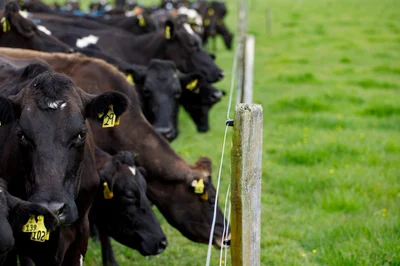Tactics to manage summer conditions

By Tony Finch, DairyNZ external engagement manager
Summer is here and for some it may continue to bring rain while for others it has been a gradual progression to warm dry conditions. With summer here, we can also expect weather commentators will continue to encourage preparedness given the prediction of an El Niño.
It is never easy to predict summer weather, but El Niño weather has a history of significant droughts occurring predominantly across Eastern parts of the country. That’s why developing a plan early for your farming business is important to be prepared and ready to respond.
I have seen farmers implement different strategies that work for their farm and location over the years, but there are some general areas that are good to consider.
Strategies can include feed demand and assessing feed supplies, along with considering how conditions are impacting your cows.
Feed demand and supplements:
Act early to reduce feed demand, including considering drying off lower-producing animals and younger stock early when they are in good condition, reducing the pressure on available resources.
If feed availability is low, carefully choose supplements based on energy content, cost, storage, wastage and feeding logistics.
It’s important to evaluate the cost of any supplementary feed bought in against the cost of alternative options to fill the deficit.
Importantly, ensure decisions are made in context of the current milk price, and consider the long-term implications on the farm and business.
Heat stress:
Nationwide there are days every summer period where cows get too hot for comfort. Therefore, access to shade and plenty of drinking water are the best line of defence, but cooling with water and changes to milking and feeding routine can help when shade isn’t enough.
To check if your cows are heat stressed, look for the following changes:
- Cows breathing faster.
- Cows standing more but grazing less.
- Increased water intake and cows hanging around troughs.
- Cows slower walking to and from the shed.
I know most farms already take action to reduce heat stress, but it is good to assess whether there are things you can alter to support your cows during these summer months. Some things will benefit staff as well, like wetting the milking shed roof to improve cow and milker comfort in the afternoon.
Regular monitoring:
The key tip for successful summer management is regular monitoring. Ensure there are farm walks, grazing residuals are managed, monitor body condition scores, and keep up to date with industry information.
Consider how this works with your summer plan and budget, and what needs to be adjusted to ensure that your cows are in the best condition over these warmer months.
For tips and information visit dairynz.co.nz/summer or dairynz.co.nz/heatstress to support you and your team to manage the coming months.
DairyNZ also has a series of webinars and podcasts on managing summer conditions, with information from a range of specialists, scientists, and farmers, visit dairynz.co.nz/summer-management.
